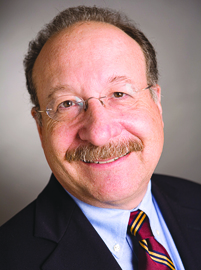Dubroff: Tri-Counties on the front lines of clean energy innovation
The region has a lot at stake in the climate talks in Paris.
That’s my takeaway as more than 190 nations gather in the French capital to ponder the future of the carbon-based economy.
Bending the curve on carbon emissions has attracted a big global constituency – engaging the Pope, multinational companies, communist regimes and democracies in both the developed world and emerging markets.
Just as global leaders were set to gather in Paris, the University of California joined with Bill Gates and other leaders to create a $1 billion clean energy fund. In making the announcement, UC President Janet Napolitano noted the UC system’s world class labs and its Nobel Prize winning scientists.
One of those efforts is UC Santa Barbara’s Institute for Energy Efficiency, a leader in energy efficient lighting, materials and energy reduction technologies. No fewer than three of the Nobel Prize winners, Shuji Nakamora, one of the world’s true pioneers in solid state lighting, Alan Heeger, in thin-film solar, and Walter Kohn are engaged in new energy technologies. A fourth Nobel laureate, Herb Kroemer, has done important work in semi-conductor materials that could lead to more energy efficiency breakthroughs.
But not all of the stakeholders in climate change are in university laboratories. The two large solar projects on the Carrizo Plain in San Luis Obispo County — the Topaz Solar Farm and California Valley Solar Ranch — are now generating 800 megawatts of electricity, effectively replacing conventional power sources and helping the state reach its renewable energy goals.
There are very preliminary plans for a large wind generating station off Morro Bay and a third large solar field is just getting off the planning stage in North Santa Barbara County.
Ventura County’s ability to balance agriculture and development means that the county acts as a bit of a carbon capture device as its lemon and avocado groves have a positive impact on greenhouse gas reduction.
The farmers of Ventura County have proven to be highly efficient when it comes to water and energy use. And organizations such as Gold Coast Recycling are finding ways to replenish depleted aquifers with treated water runoff.
I’ve been working informally with the Bren School of Environmental Management to strengthen ties between environmentally conscious companies and the Bren School’s expertise in creating sustainable supply chains.
That’s a path that established corporations such as Patagonia and startups like Salty Girl Seafoods have been blazing in our region.
The Public Policy Institute of California reported on Dec. 2 that a majority of state residents take climate change seriously and only 19 percent think that the state’s efforts to fight climate change will cost jobs.
Still there are plenty of issues to contend with:
• The future of PG&E’s Diablo Canyon Nuclear Plant, the last nuclear power station on the West Coast, remains unclear. With its license expiring in a bit over a decade, PG&E is still assessing the level of seismic risk and it faces new state objections about discharging warm water into the ocean. Even the environmental community is divided on the future role for nuclear power in a low carbon world.
• The future of oil and gas operations in the Tri-Counties is another unresolved issue. Offshore drilling reduces offshore methane emissions and produces needed tax revenue but last summer’s Refugio oil spill has cast doubt about pipeline safety and the future of oil-and-gas drilling off shore. Onshore, low oil prices have one major operator, Freeport McMoRan, talking about selling out.
• There’s clearly a partisan undertone to the climate change debate with 79 percent of Democrats saying it’s a serious issue while just 21 percent of Republicans agree, according to the PPIC report on Dec. 2.
• Reach Editor Henry Dubroff at [email protected].











